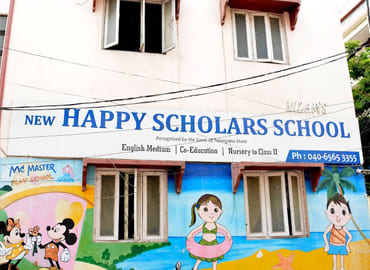Best Primary Schools
Parents often prioritize a nurturing environment that promotes academic and personal growth when searching for the best primary schools. These schools stand out for their dedicated teachers who impart knowledge and inspire a love for learning. Teachers in these institutions often use creative teaching methods, making lessons engaging and accessible. They strive to create classrooms encouraging questions and exploration, allowing students to develop critical thinking skills from a young age. The focus is not only on academic achievements but also on fostering social skills and emotional intelligence, preparing children for future challenges.
Another critical aspect of top primary schools in Hyderabad is their commitment to a well-rounded education. They offer a broad curriculum that includes core subjects like math, science, language arts, arts, physical education, and technology. Such a diverse curriculum helps children discover their interests and talents outside traditional academic boundaries. Schools that excel in this area often provide various extracurricular activities, allowing students to participate in sports, music, and clubs. This holistic approach enables children to develop their skills in multiple disciplines, encouraging a lifelong passion for learning and personal development.
Community involvement is a defining feature of the best primary schools. These schools often work closely with parents, local organizations, and other stakeholders to create a supportive student network. Events such as open houses, family nights, and community service projects foster a sense of belonging and collaboration. Parents are encouraged to participate in their child's education, creating a partnership that enhances the learning experience. Schools that prioritize community connections often see higher levels of student engagement and enthusiasm, as children feel supported by their teachers, their families, and the wider community.
Safety and well-being are paramount in the best primary schools. These institutions implement various measures to ensure students feel secure and cared for. This includes physical safety protocols, mental health support, guidance counselling, and bullying prevention programs. A positive school culture promotes kindness and respect, creating an environment where students can freely express themselves and thrive. Schools that prioritize their students' emotional and psychological well-being see improved academic performance and happier, more confident learners. A strong foundation in this area gives children the confidence to take risks and embrace new challenges.
Lastly, the best primary schools in Hyderabad are characterized by their commitment to ongoing improvement and innovation. They regularly assess their teaching methods and curriculum to adapt to the changing needs of students and society. This includes integrating technology into the classroom, facilitating remote learning capabilities, and embracing modern pedagogy that enhances student engagement. Professional development for teachers is also a priority, enabling them to stay updated with the latest educational practices. Schools that are proactive about improvement provide a high education standard and equip their students with the tools they need to navigate an ever-evolving world.
We are exploring the school with some areas to be covered, like Asif Nagar, Masab Tank, Vijay Nagar Colony, Gudimalkapur, Salarjung Colony, Tolichowki, Humayun Nagar, Padmanabha Nagar Colony, Ayodhya nagar, Attapur, Upperpally, Hyderguda, Hyderabad Telangana, India so that children can join from these areas too.


